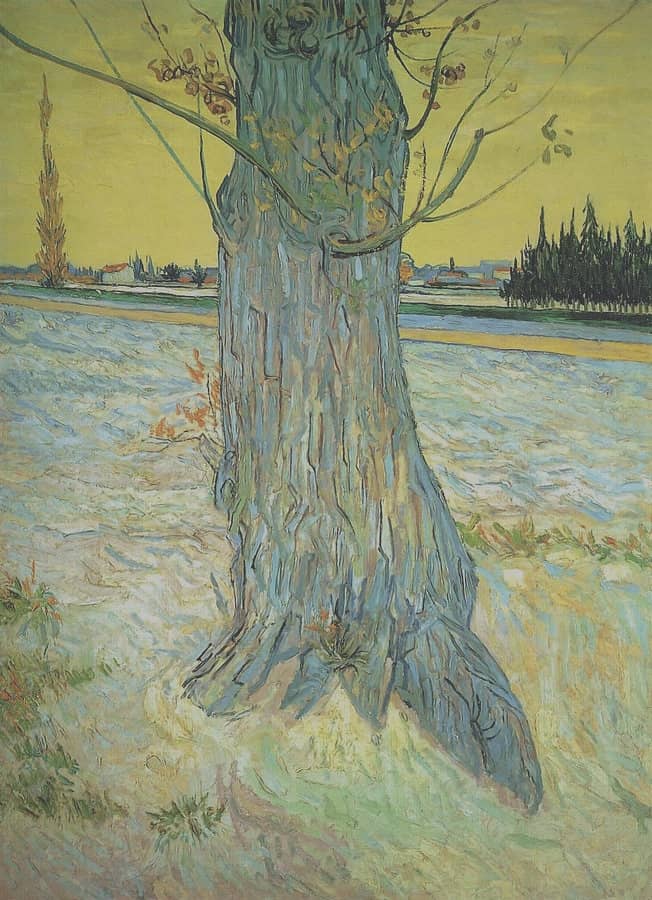Trunk of an Old Yew Tree, 1888 by Vincent van Gogh

Propelling a tree trunk, (not even the tree in its entirety), to the centre of the canvas and treating it as the primary subject was an unusual practice, but something that Van Gogh did several times. He was fascinated by the striations and pattern of tree bark and tree roots, and made several paintings focusing on just these elements, seeking out the decorative quality that the natural formations mode.
Here he has included a landscape, too, and in the distance behind the tree is the town of Arles, though it barely impinges on the scenery. The small clump of dark trees on one side of the yew and the toll poplar on the other dwarf the buildings in the background, and also echo the diminutive chimneys and steeple, while the diagonal path in the middle distance cuts the painting in two with the old yew in the foreground and the background scenery behind. By placing the yew directly in the middle of the canvas it blocks the view, and in so doing entices the viewer to study it further, seeking to look behind it.




















